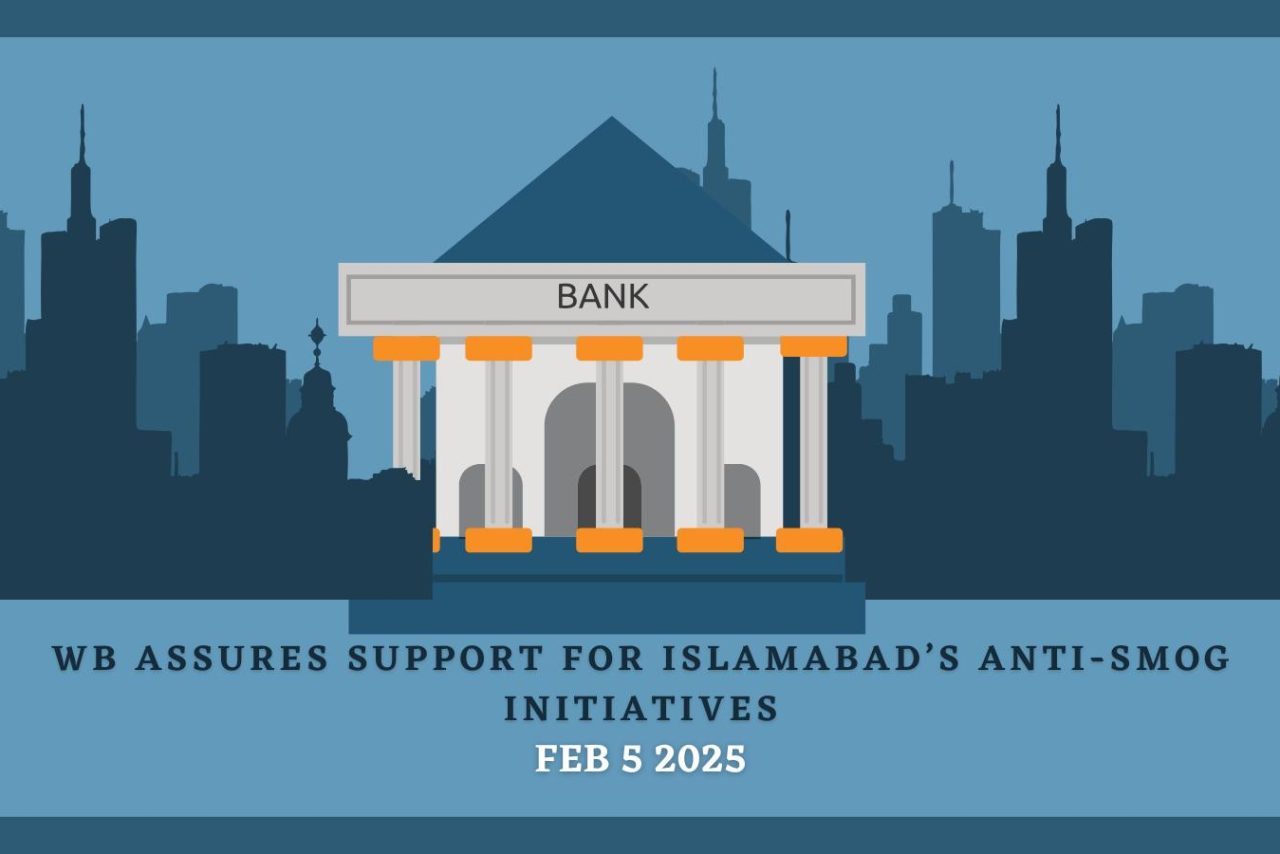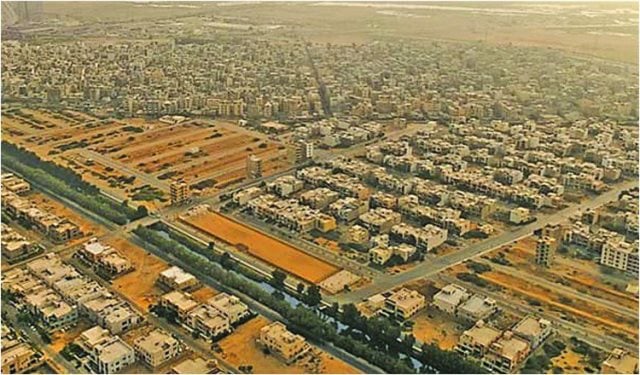
WB Assures Support for Islamabad’s Anti-Smog Initiatives in Islamabad: The World Bank has assured Capital Development Authority (CDA) of their support in dealing with air pollution and smog-related challenges in Islamabad during a meeting held between CDA Chairman Muhammad Ali Randhawa and Lesley Y Cordero of World Bank’s Disaster Risk Management Program at CDA Headquarters.
Senior CDA officials, including its Member Environment and Chairman Randhawa, attended this meeting and discussed key measures to enhance Islamabad’s air quality. Chair Randhawa stressed the need for an accurate Air Quality Index (AQI) to inform citizens accurately of air quality conditions before its seasonal peak occurs. Furthermore, various steps were suggested by Chairman Randhawa to mitigate potential smog problems that might otherwise emerge during this season’s heatwaves.
Read: Discover Your Dream Home: Houses for Sale in Abbottabad
As part of its effort to combat vehicular pollution, the CDA adopted a zero-tolerance policy toward vehicles emitting smoke-emitting exhaust fumes while mandating fitness certificates for all vehicles operating within its capital city limits. Electric buses were highlighted as one way of providing eco-friendly transport while simultaneously decreasing emissions.
Read: The Ultimate Guide to Buying Plots for Sale in Abbottabad – Expert Tips for Investors
The chairman reiterated the significance of strengthening cooperation with the World Bank, specifically through technical assistance for carbon credit acquisition. To promote sustainability initiatives more efficiently, he suggested creating a Carbon Credit Cell within CDA as well.
Lesley Cordero assured the CDA of World Bank cooperation in improving Islamabad’s air quality, offering to assist them with creating short, medium, and long-term strategies to promote environmental improvement.
Chairman Randhawa expressed his dedication to using World Bank expertise for pollution control measures that promote healthy environments within Islamabad, ultimately creating a healthier and cleaner city environment.
FAQs:
- Why does SMOG fall in Pakistan in November?
Smog in Pakistan, particularly in cities like Lahore, worsens in November due to a combination of factors. These include a drop in temperature, low wind speeds, vehicular emissions, industrial pollution, and the burning of crop residues in Pakistan and neighboring India. The cooler weather causes pollutants to become trapped near the surface, forming dense smog.
- What is the smog situation like in Pakistan? Is it as bad as in Beijing, China? How can the smog problem be solved?
The smog situation in Pakistan, especially in cities like Lahore, is severe and often reaches hazardous levels. Air Quality Index (AQI) readings frequently exceed safe limits, making it one of the most polluted cities in the world during winter.
While Beijing has historically faced extreme smog, China has implemented strict policies, such as shutting down polluting industries, restricting vehicle use, and promoting green energy. As a result, Beijing’s air quality has improved significantly in recent years. Lahore, on the other hand, still struggles due to weak enforcement of environmental regulations.
while WB assures support for Islamabad’s anti-smog initiatives and give solutions to smog in Pakistan
- Implementing stricter emissions controls on industries and vehicles
- Promoting public transport and reducing reliance on fossil fuels
- Banning the burning of crop stubble and offering alternative disposal methods
- Increasing afforestation efforts and urban green spaces
- Improving monitoring systems and enforcing environmental laws
- How do you mitigate the smog calamity in Pakistan?
To mitigate smog in Pakistan, authorities and individuals can take several measures:
Government Actions:
Enforcing environmental regulations and penalizing industries violating pollution limits
Introducing and promoting electric vehicles
Improving urban planning to reduce congestion and pollution hotspots
Individual Actions:
Reducing the use of private vehicles and opting for public transport or carpooling
Avoiding burning waste or leaves, which contributes to particulate pollution
Using air purifiers and wearing masks during high-smog periods
- Where is the worst smog in the world?
Some of the worst smog-affected cities in the world include:
New Delhi, India – Consistently ranked among the most polluted cities, especially in winter due to vehicular emissions, industrial pollution, and crop burning.
Lahore, Pakistan – Frequently records hazardous AQI levels in winter, making it one of the worst-hit cities.
Beijing, China (historically) – Once suffered from severe smog, but recent policies have improved air quality.
Dhaka, Bangladesh – Faces extreme air pollution due to brick kilns, traffic congestion, and poor waste management.
- How does the World Bank work?
The World Bank is an international financial institution that provides loans and grants to countries for development projects aimed at reducing poverty and improving infrastructure. It works through two main institutions:
International Bank for Reconstruction and Development (IBRD): Offers loans to middle-income and creditworthy low-income countries.
International Development Association (IDA): Provides low-interest or interest-free loans and grants to the world’s poorest countries.
The World Bank funds projects related to infrastructure, education, health, and environmental sustainability. It also provides policy advice and technical assistance to governments.
- How does smog in Lahore, Pakistan compare to the smog situations in Beijing, China, and New Delhi, India?
Lahore vs. Beijing:
Beijing used to have severe smog but has significantly improved due to strict policies, reduced coal use, and better public transport. Lahore still faces severe smog due to weak enforcement of environmental laws.
Lahore vs. New Delhi:
Both cities suffer from similar causes of smog, including vehicular emissions, industrial pollution, and crop burning. However, New Delhi often records even worse air quality than Lahore, especially in winter.
Overall Comparison:
While all three cities face severe smog, Beijing has made significant improvements, whereas Lahore and New Delhi continue to struggle, particularly due to agricultural burning and weak pollution controls.
Source : Zameen.com
Source of FAQs: Quora




Leave a Reply